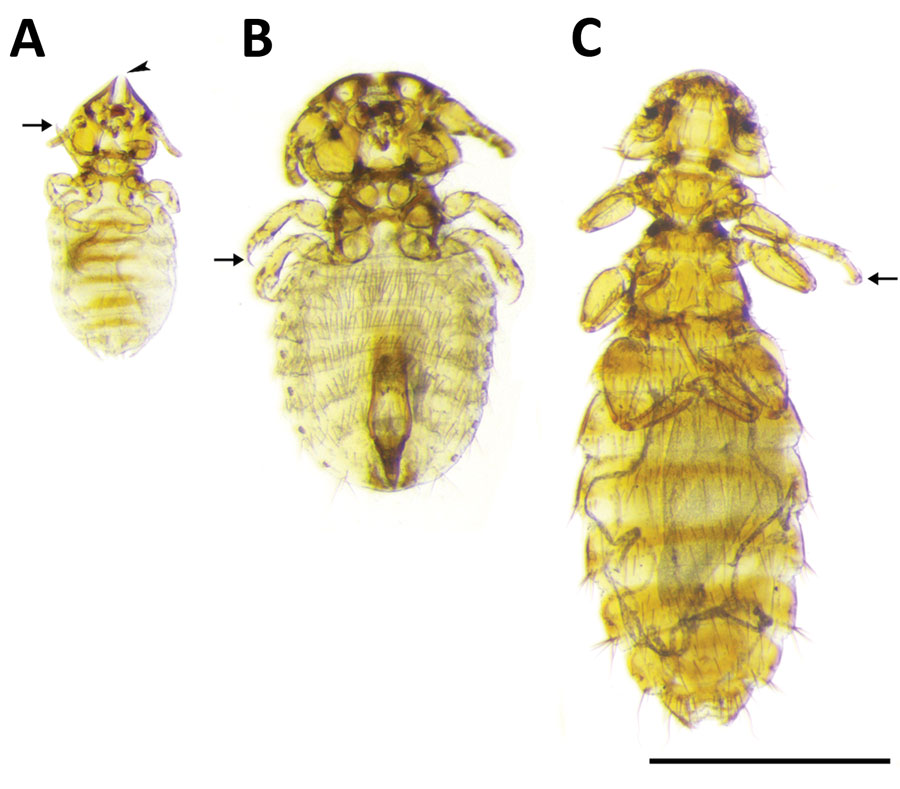Zoonotic Vectorborne Pathogens and Ectoparasites of Dogs and Cats in Eastern and Southeast Asia
Vito Colella

, Viet L. Nguyen, Do Y. Tan, Na Lu, Fang Fang, Yin Zhijuan, Jiangwei Wang, Xin Liu, Xinghui Chen, Junyan Dong, Wisnu Nurcahyo, Upik K. Hadi, Virginia Venturina, Kenneth B.Y. Tong, Yi-Lun Tsai, Piyanan Taweethavonsawat, Saruda Tiwananthagorn, Thong Q. Le, Khanh L. Bui, Malaika Watanabe, Puteri A.M.A. Rani, Giada Annoscia, Frédéric Beugnet, Domenico Otranto, and Lénaïg Halos
Author affiliations: University of Melbourne, Melbourne, Victoria, Australia (V. Colella); University of Bari, Bari, Italy (V. Colella, V.L. Nguyen, G. Annoscia, D. Otranto); Boehringer Ingelheim Animal Health, Lyon, France (D.Y. Tan, Na Lu, F. Beugnet, L. Halos); Guangxi University, Nanning, China (F. Fang); KangBao Pet Hospital, Guilin, China (Y. Zhijuan); Sapphire Veterinary Hospital, Shanghai, China (J. Wang); Meilianzhonghe Veterinary Referral Center, Beijing, China (X. Liu); Chongyisheng Veterinary Hospital, Chengdu, China (X. Chen); Nanjing Police Dog Research Institute, Nanjing, China (J. Dong); Gadjah Mada University, Yogyakata, Indonesia (W. Nurcahyo); Bogor University Indonesia, Jakarta, Indonesia (U.K. Hadi); Central Luzon State University, Nueva Ecija, Philippines (V. Venturina); Animal & Avian Veterinary Clinic, Yishun, Singapore (K.B.Y. Tong); National Pingtung University of Science and Technology, Pingtung, Taiwan (Y.L. Tsai); Chulalongkorn University, Bangkok, Thailand (P. Taweethavonsawat); Chiang Mai University, Chiang Mai, Thailand (S. Tiwananthagorn); Nong Lam University, Ho Chi Minh City, Vietnam (T.Q. Le); Vietnam National University of Agriculture, Hanoi, Vietnam (K.L. Bui); University Putra Malaysia, Selangor, Malaysia (M. Watanabe, P.A.M.A. Rani)
Main Article
Figure 4

Figure 4. Chewing lice collected from dogs and cats in study of ectoparasites and vectorborne zoonotic pathogens of dogs and cats in Asia, 2017–2018. A) Female Felicola subrostratus louse with triangular head and pointed anteriorly. The median longitudinal groove (arrowhead) on the head fits around the shaft of the hair of the host. Thorax is short and legs are small, ending with a single claw (arrow). B) Trichodectes canis male louse with short thorax, flattened head with quadrangular shape, broader than long; each leg with only 1 claw on tarsus (arrow). C) Heterodoxus spiniger female louse with subtriangular head, rounded anteriorly. The thorax is considerably longer than wide. Each leg has 2 claws on the tarsus (arrow). Scale bar indicates 1 mm.
Main Article
Page created: May 18, 2020
Page updated: May 18, 2020
Page reviewed: May 18, 2020
The conclusions, findings, and opinions expressed by authors contributing to this journal do not necessarily reflect the official position of the U.S. Department of Health and Human Services, the Public Health Service, the Centers for Disease Control and Prevention, or the authors' affiliated institutions. Use of trade names is for identification only and does not imply endorsement by any of the groups named above.
